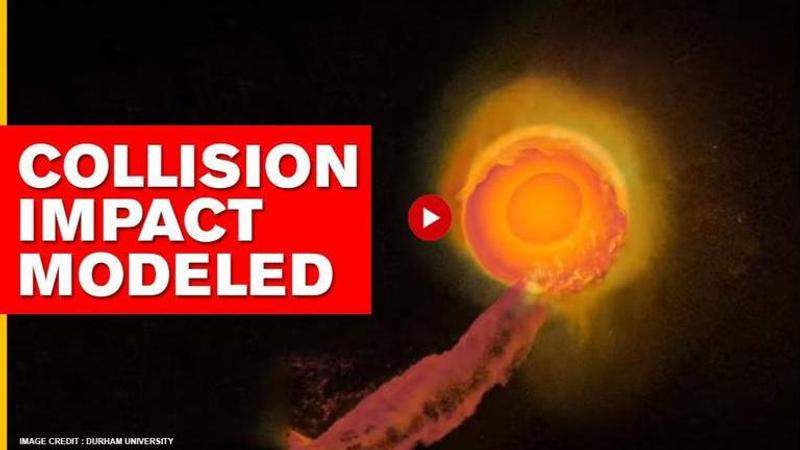Published 20:59 IST, July 22nd 2020
Earth may have lost half of its atmosphere to create Moon, reveals study using 3D videos
Scientists at Durham University created 3D videos of what it would look like if an object were to come hurtling towards an Earth-like planet in early universe

How would a collision of some celestial object with Earth look like? Will our planet shatter into millions of pieces of space debris or be torn into larger objects.
It might be hard for some to imagine but certainly not for researchers and space geeks at Durham University who have now used advanced 3D computer simulations to show how Earth-like planets with thin atmospheres might have evolved in an early solar system depending on how they are impacted by other objects.
Astronomers in the Institute for Computational Cosmology, Durham University, conducted the simulations on the COSMA supercomputer and used the SWIFT open-source code, largely developed and maintained at Durham, to enable the running of these high-resolution supercomputer simulations.
The findings provide greater insight into what happens during these giant impacts, which scientists know are common and important events in the evolution of planets both in our solar system and beyond. Using 3D supercomputer simulations, the researchers have found a way of revealing how much atmosphere is lost during these events.
The researchers ran more than 100 detailed simulations of different giant impacts, altering the speed and angle of the impact on each occasion. They found that grazing impacts – like the one thought to have formed our Moon 4.5 billion years ago – led to much less atmospheric loss than a direct hit.
Giant impacts
Head-on collisions and higher speeds led to much greater erosion, sometimes obliterating the atmosphere completely along with some of the mantle, the layer that sits under a planet’s crust.
Using the results, the study estimates that Earth got lucky with its collision that created the Moon. The impact only managed to wipe out between 10% to 50% of its atmosphere.
"In spite of the remarkably diverse consequences that can come from different impact angles and speeds, we've found a simple way to predict how much atmosphere would be lost,” said the lead author of the study, Dr. Jacob Kegerreis.
The study will help scientists to understand both the Earth’s history as a habitable planet and the evolution of exoplanets around other stars. The researchers are carrying out hundreds of more simulations to test the effects that the different masses and compositions of colliding objects might have.
Updated 20:59 IST, July 22nd 2020



